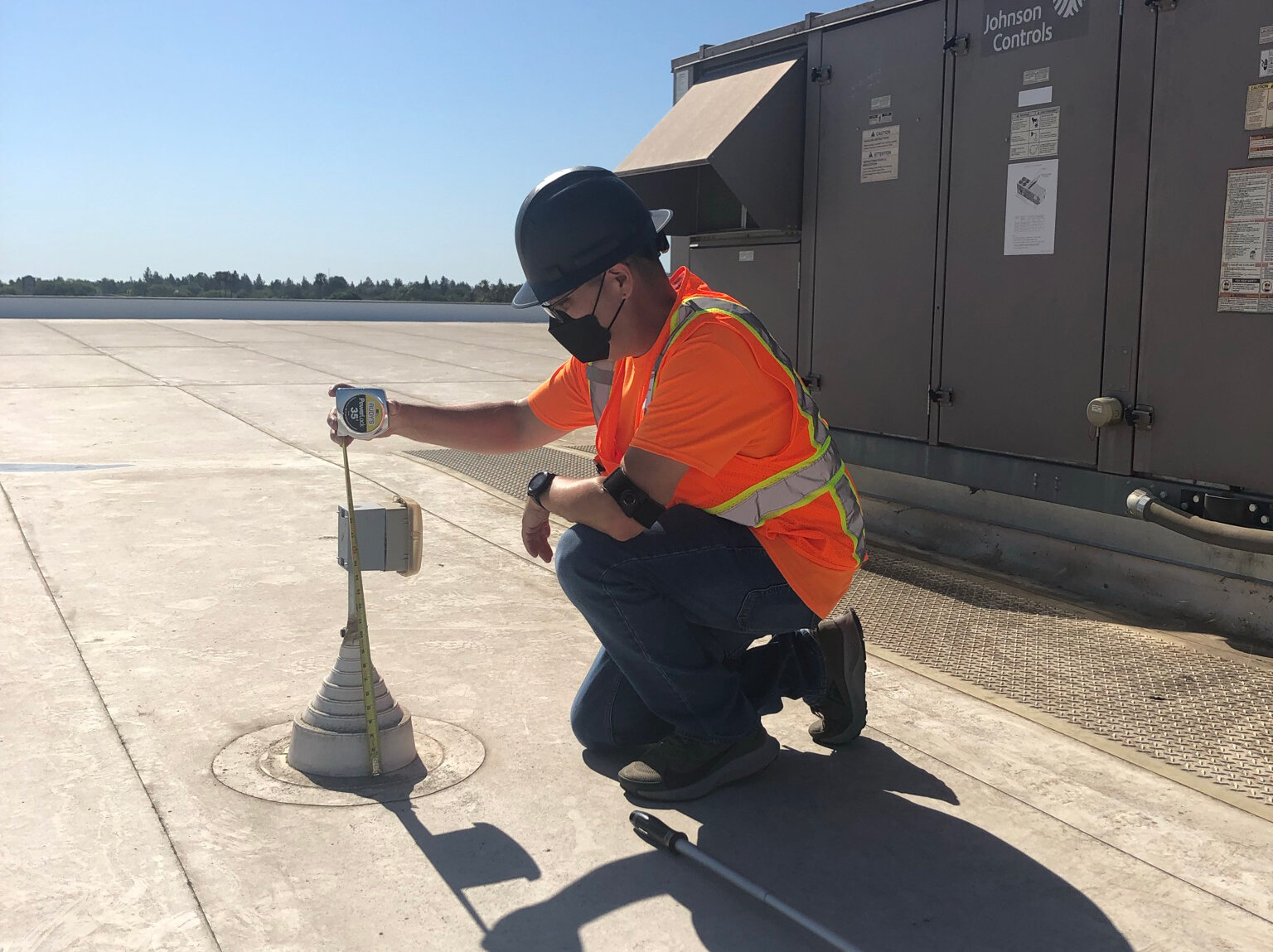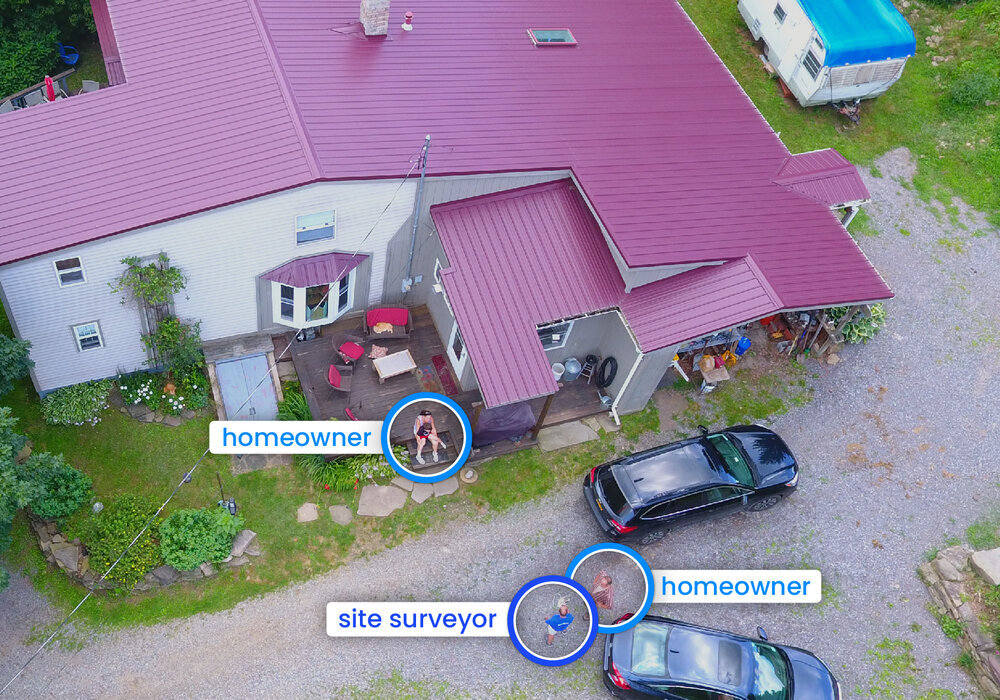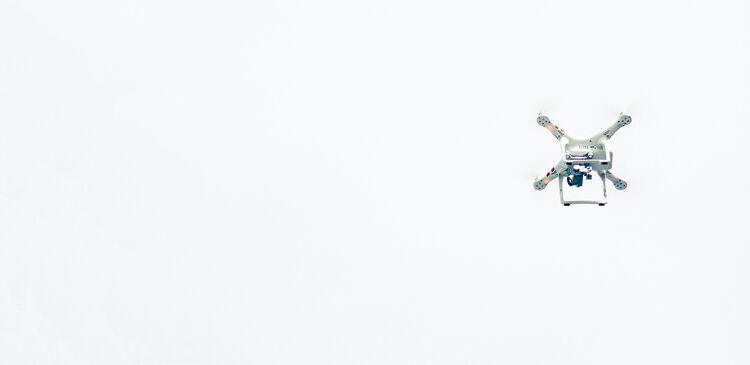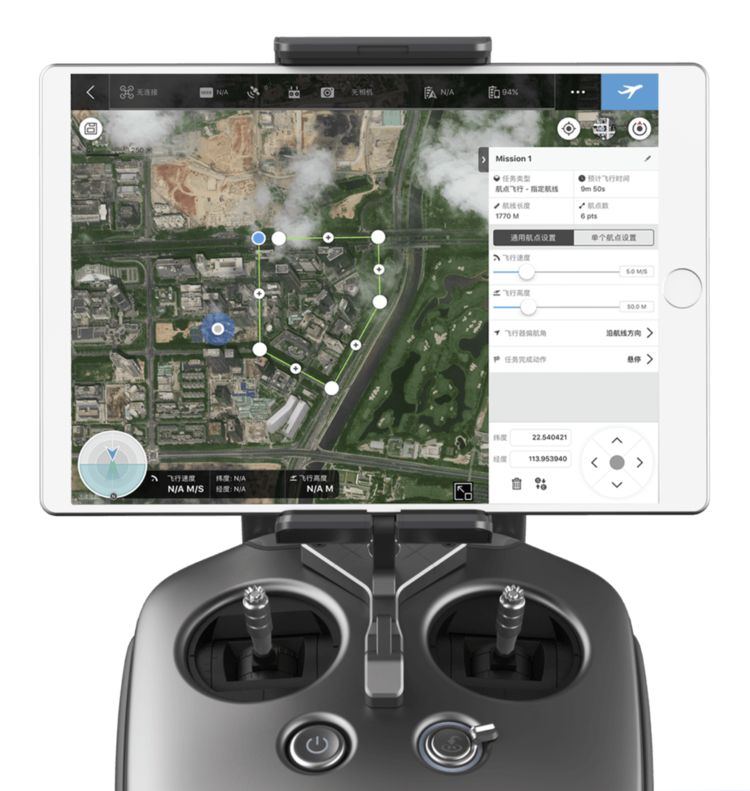Drones almost fly themselves these days, which is both really cool and a big risk. Watching a drone fly fully or semi-autonomously can make you think nothing will go wrong. But the reality is that drones are relatively expensive, fine-tuned machines that need humans to guide and pay attention to them, especially in the context of solar surveys.
At Scanifly we’ve collectively flown thousands of solar survey drone flights and have collected a handful of tips that aren’t explained in a manual. These recommendations fall into three categories: your appearance, how you engage with people, and tips for drone flight itself.
Step 1: Dress the part
It may seem insignificant, but how you look when you show up to a site matters a lot. Since surveyors are often the first people a customer meets besides a sales rep, your appearance sets the tone for the entire project and can affect how easy it is for you to do your job.
Wear branded clothing
Surveying requires being on someone else’s private property. Showing up in unmarked clothing could easily make someone uncomfortable, which might lead to them asking you to leave. Branded clothing – even just a polo with a company logo on it – solves this problem.

Use clothes to project authority
You’re working with a piece of machinery and conducting an assessment to install a mini power plant on someone’s home, so it’s important to dress the part. Wear safety vests, professional shoes (or boots, depending on weather), and clean denim or khaki pants. In some areas, we recommend also wearing a caution or safety vest.
Drive a clean vehicle
Similar to how you dress, your vehicle reflects on you as an individual and on your company. If you drive company vehicles, make sure there’s a visible company logo. If you’re driving a personal vehicle, keep it tidy and don’t allow garbage to accumulate.
Bring the right kind of hat
When flying drones, we recommend wearing a hat that provides shade both for your eyes and the screen for your drone controller. If you’re blinded by the sun or the screen has too much direct exposure, it could cause you to lose visibility, which increases the chance of an accident.

Wear a name tag and bring your drone license
The name tag is for customer comfort purposes so they know exactly who they are dealing with. The drone license is for pushy people. While it’s not legally required to provide your drone license to anyone but law enforcement officers, some people get really scared of drones (we’ve had one person threaten to shoot it down). Showing a drone license along with your name and company name usually gets these people to back down and realize you’re a professional doing a job.
Step 2: Engage with people the right way

Even though your job as a surveyor is to assess a site, how you interact with people is important.
Make sure homeowners know what’s going on
When you arrive at a site, introduce yourself to the homeowners and explain each kind of flight you have to do (context, detail, etc.) and what the drone will look like during those flights. To an untrained eye, a point of interest (POI) flight might look menacing and a nadir flight might look erratic. Give people the context so they can have peace of mind.
Explain to nearby neighbors what’s going on as well
If you’re surveying a home with neighbors nearby, introduce yourself to them and explain what’s going on. Be sure to clearly state you will not be going over their property line and you will not be taking any images of their property (except maybe a corner of the roof by accident). You should also remind them that a drone will sound a lot like a loud bee, so they shouldn’t be concerned if they hear that noise.
Invite people to watch the drone flight
People are often fascinated by drones. Invite them to watch if they’d like! This is a great disarming technique for anyone who is skeptical of drones and it’s also useful for building brand equity and ‘cool factor’ in your work.

Step 3: Lead a successful drone flight
Drones aren’t cheap to buy or to fix, so you want to make sure you’re leading a safe flight.
Check surroundings
Look explicitly for tall trees, power lines, and light poles that might get in the way of a POI flight. If you have any of these issues, see if you can survey around them. Many drones also have obstacle avoidance technology, so the drone can help you a bit in this situation.
Don’t put your fingers near the propellers
A lot of people are tempted to grab the drone from the top to put it down on the ground, which can be a problem for your fingers. Drone propellers can severely cut your fingers if turned on at the wrong time, so always pick up drones from the bottom.

Turn the controller on first
Drones have two parts: the drone itself and the controller. Typically, your phone screen becomes part of the controller via an app. It’s important to turn the controller on first, since turning the drone on could lead it to take off suddenly.
Find a good launch spot
A good launch spot is one that’s open with a wide radius for the drone. If you’re in a densely populated area, consider using the sidewalk, middle of the street, middle of the yard, or the middle of a cul-de-sac round if the house you’re surveying is nearby.
Start your context flight from the highest point
On launch, fly to the tallest obstruction (usually a tree or power line) and hover about 20 feet above it. From there, do your context flight. Going to the highest spot on the site gives you freedom to get context knowing that you won’t have any obstructions.
Watch for obstructions carefully on detail flights
Often, houses might have small vent pipes or similar obstructions that are only a couple inches tall, so overhead images would miss them. When you do detail flights, go a bit more slowly so you can really focus on capturing obstructions on all three planes. This is where a POI flight is helpful because it captures the building’s obliques (and X, Y, and Z axes).
Flying drones for (solar) fun and profit
Drones are a great tool to make surveys safer, more effective, and more fun. But remember that you can’t simply show up and hope for the best. Even though drones do a lot of flying by themselves these days, it’s critical to show up looking the part, make sure all humans involved know what’s going on, and set up the drone flight safely so nothing goes wrong.






